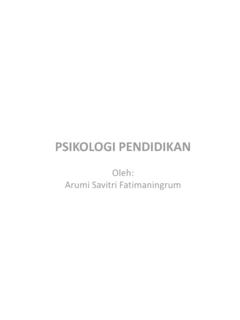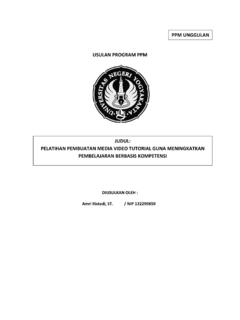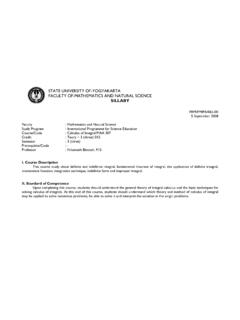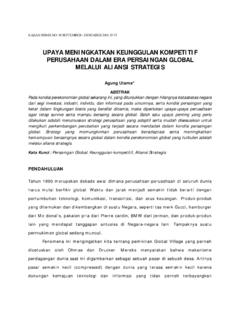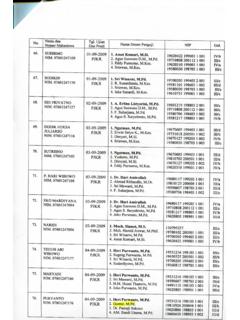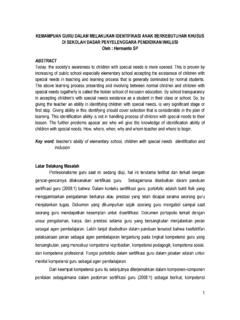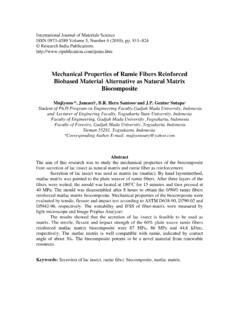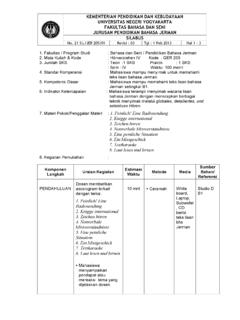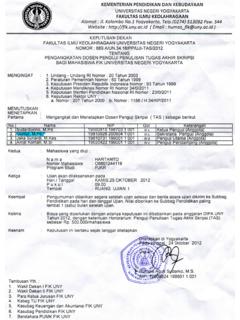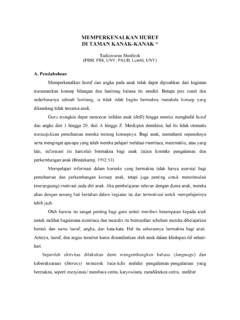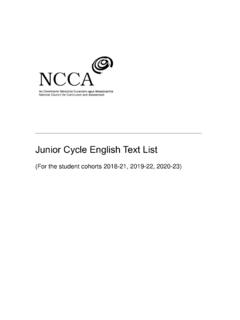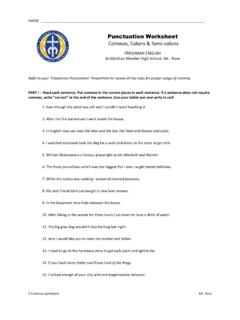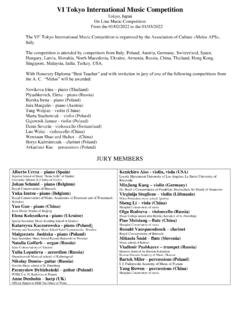Transcription of Chapter I: Nouns in the English System
1 1 Chapter I: Nouns in the English System A noun can be defined as a word used to name a person, place, or thing. By a thing here, it means that it comprises something which can be perceived by human senses, or that which cannot be perceived but can be thought of. The System of English Nouns , for most of the Indonesian-learners of English , is complicated. According to their kinds, logically English Nouns can be classified into 2 kinds, (1) proper, and (2) common Nouns which are divided into (a) abstract, (b) individual, and (c) collective Nouns . Based on their grammatical distinction, these common Nouns can be made into (1) countable and (2) uncountable Nouns .
2 In other words, countable Nouns belong to individual and collective Nouns , and most uncountable Nouns belong to abstract and individual Nouns . When they are categorized according to their number, these countable Nouns can be divided into (1) singular and (2) plural Nouns ; when they are categorized according to their gender, they can be divided into (1) masculine, (2) feminine, (3) common, and (4) neuter gender. Noun classification according to the case will be discussed after the topic on the concord between subjects and their verbs is given.
3 For clarification, this System can be diagrammatically drawn as the following. Nouns Classified according to kinds grammatical number gender case distinction 1) proper 2) common 1) countable 1) singular 1) masculine 1) nominal 2) uncountable 2) plural 2) feminine 2) accusative 3) common 3) genitive 4) neuter a) abstract b) individual c)
4 Collective 2A. Kinds According to their kinds, Nouns can be classified into proper and common Nouns . 1. A proper noun is, referring to Maurer (2000:105), a name of a particular, individual person, place, or thing who/which is usually unique. It is written is a capital letter. 2. A common noun is, according to Wren and Martin (1990:5), a name given in common to every person or thing of the same class or kind . Different from proper Nouns , this sort of Nouns is not written in a capital letter. The following chart shows how these two categories work in practice.
5 Proper Nouns common Nouns Karen Daniel Yogyakarta Indonesia Sarjana Wiyata girl boy city country university When classified into their particular details, common Nouns can be divided into 3 classes, abstract, individual, and collective Nouns . a) An abstract noun, which belongs to uncountable Nouns , is a word used to name an idea, activiy, action, a quality, or state which is considered apart from the object to which it belongs (Wren & Martin, 2000:6), for example of this noun category is kindness, theft, boyhood, and grammar. b) An individual noun, which belongs to countable Nouns , is a word that represents a typical member of a group and may include most f the concrete Nouns , words which can be perceived by human senses.
6 This caegory can be exemplified by these words: student, lawyer, flower, and plant. c) A collective noun names a group, number, or collection of persons, objects, or things taken together and spoken f as one whole (Whren & Martin, 2000:5), for example, fleet, police, and crowd. Noticed how they are used in the followings. 1) A fleet may mean a number of warships or vessels, under one commander. For example, Admiral Sudomo led the Indonesian combat fleet to attack the Dutch fleet. 32) Police is men and women belonging to a departememnt of goverment concerned with the keeping f public order: Several hundred police were on duty at the demonstration (Hornby, 1974:644).
7 3) A crowd means a large number of people together, but without order or organization : He pushes his way through the crowd (Hornby, 1974:206). EXERCISES I. Decide which of the following Nouns belong to proper Nouns , and then decide also whether those which do not belong to this class are abstract, individual, or collective. Jones, money, rocket, actress, King James I, hatred, mob, conscience, State University of Yogyakarta, herd, team, the Himalayas, patriotism, town, pencil II. Identify the proper Nouns in the following list and write them with a capital letter on a separate sheet of paper.
8 william shakespeare secretary new south wales prisoner romeo and juliet merdeka square april thames saint valentine seaweed city traffic snow blue mountain apollo 11 jefferson high school III. Form the abstract Nouns from the followings. advise author believe bitter bond converse cruel deep defend depart die hate hero king know laugh live long obey patriot poor proud pursue regent serve short succeed think true wide IV. Supply the appropriate collective Nouns for a number of the following Nouns . 1. a _____ of bananas 2. a _____ of books 3. a _____ of brigands 4. a _____ of disorderly people 8. a _____ of lions 9.
9 A _____ of people in church 10. a _____ of sailors on a ship 11. a _____ of ships 45. a _____ of elephants 6. a _____ of fish 7. a _____ of hounds 12. a _____ of stars 13. a _____ of trees 14. a _____ of wolves V. Write your own sentences using the following expressions. B. Grammatical Distinction and Number When the classification is made on the basis of their grammatical distinction, as stated above, common Nouns may be grouped into 2. They are (1) countable Nouns which are made up from individual and collective Nouns and (2) uncountable Nouns which are mostly made up from abstract Nouns .
10 According to their number, these countable Nouns can be made into (1) singular and (2) plural Nouns . Although the note on countable and uncountable Nouns in this section is trustworthy, it is not always easy to distinguish countable from uncountable Nouns . Swan (1983:164) states that It is not always obvious whether a word is countable and uncountable; if you are not sure, check in the Oxford Advanced Learner s Dictionary of Current English ( Nouns are marked C or U). Sometimes words can be uncountable with one meaning and countable with another, .. 1. A countable noun refers to Nouns denoting persons or things that can be counted.
